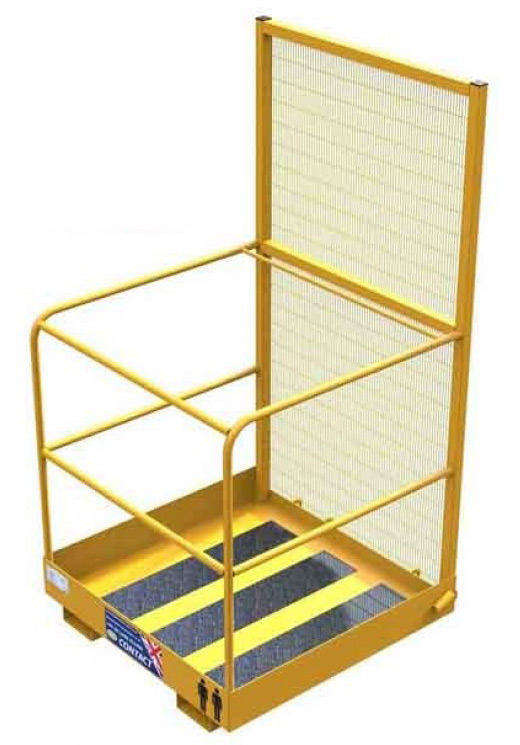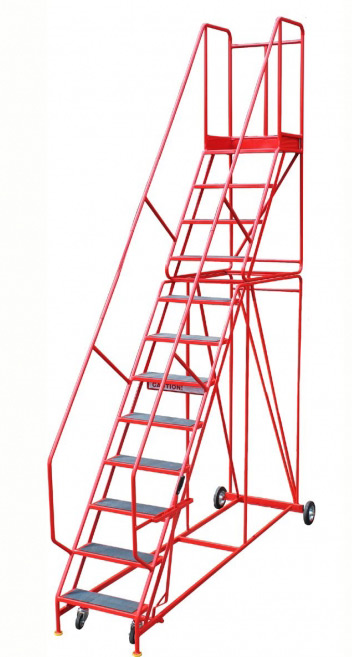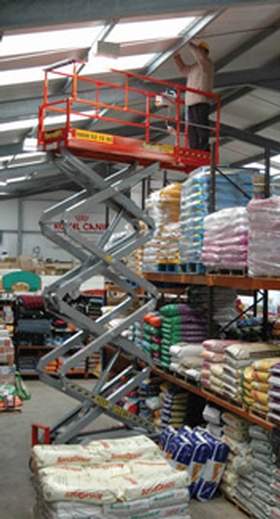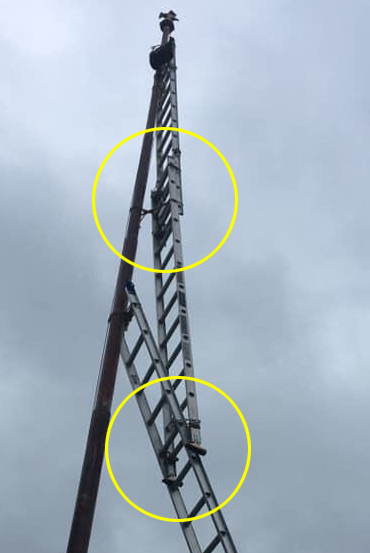
This highly shared image has several big safety concerns packaged together in to one single picture.
Here’s how this must have happened: they’re trying to lift a piece of equipment higher than either forklift can reach, so the solution is to use the biggest forklift to lift the smaller one, while it in turn lifts up the equipment. Altogether, it can reach where the kit needs to go. Genius? I’m afraid not.
Starting with the forklifts – lifting one forklift with another is insanely dangerous. The smaller forklift is a very unusual load as it is holding the equipment in the air and this shifts its center of gravity up and out. It tipping over or hitting something is a real danger, especially as the larger forklift has to swing it and its load in to position. If either forklift starts to tip, everything would come crashing down in very short order. The strain on the lower forklift is very hard to predict given the unusual shape of what it is lifting.
Then we come to the people. The two gentlemen standing on and next to the smaller forklift are presumably spotting for the driver, guiding him in to know when the equipment is on to the higher plane. Doing this without any PPE is very dangerous – they should have at least harnesses, lanyards and hard hats. Hard hats may seem odd when they’re up in the air like this, but something pinging off a load if it catches a beam or safety rail, or your head banging on a beam as the load moves is a real possibility.
It doesn’t take much to make you fall off something, and a fall from that height can easily cause serious injury or death.
And that’s ignoring where the workers are standing, they shouldn’t be there at all. Standing on the load being lifted is a stupid risk, especially when the load shouldn’t be getting lifted at all. Even with proper harnesses and restraints this would be ill advised, as it is they are taking terrible risks.
What should they have done instead?
Hired in a bigger forklift with enough reach to safely deliver the equipment to where it needs to be.
With the proper equipment doing the lifting, the spotters could be on the floor and at a safer distance above as usual. If you really need a spotter in the air, having them on a scissor lift or tower would be much, much safer than them riding with the load.
Hopefully this all worked out on the day for these guys, but don’t do this yourself, all it would take is a tiny problem for someone in this situation to lose their life.
Picture source: Facelift Access, but we have seen it shared time and time again.
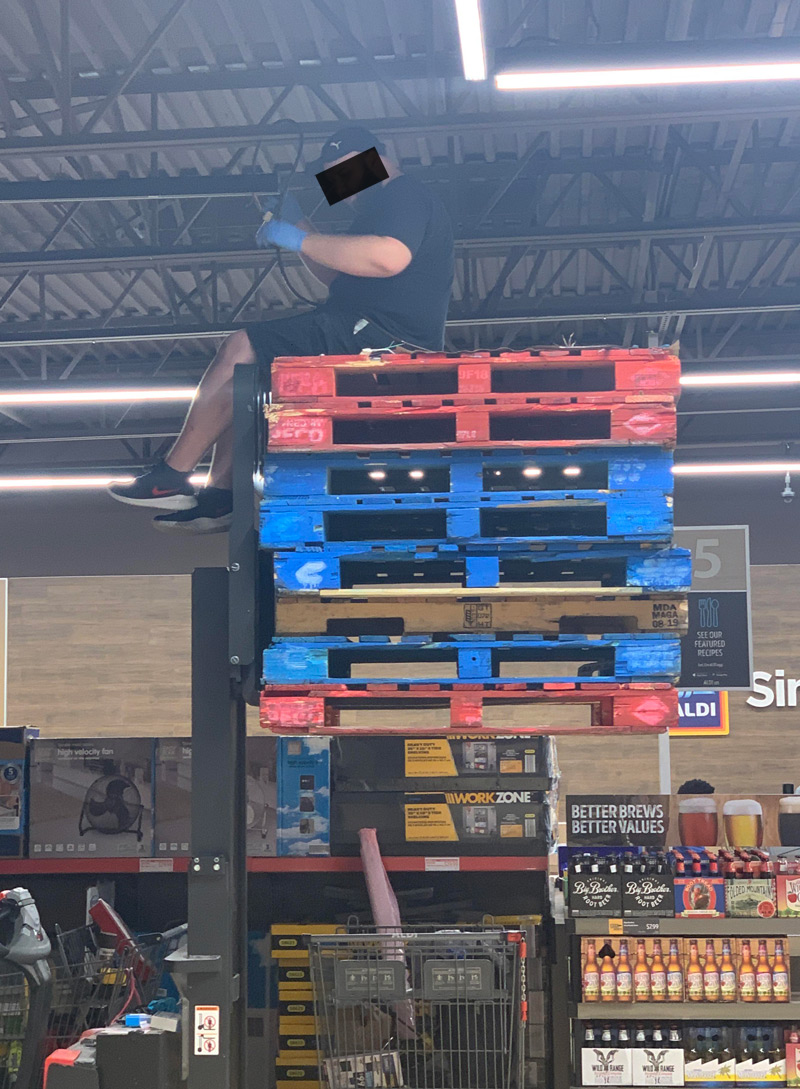 What’s wrong with this picture? It’s just a guy up in the air fixing some electrics. He looks safe enough, sitting on a neat stack of pallets.
What’s wrong with this picture? It’s just a guy up in the air fixing some electrics. He looks safe enough, sitting on a neat stack of pallets.